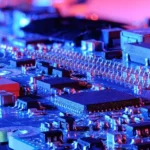The Internet of Things (IoT) has emerged as a technological marvel, seamlessly connecting devices, machines, and systems, allowing real-time communication and sharing of information. This interconnected web of devices, often called the IoT ecosystem, is reshaping our lives and industries, shifting how we interact with our surroundings.
Observation of the Internet of Things
At its core, the Internet of Things connects objects or devices to the Internet, enabling them to collect and exchange data. These objects, from household appliances and wearable devices to industrial equipment and vehicles, are embedded with sensors, actuators, and communication modules that allow them to send and receive data. This influx of data forms the backbone of IoT, providing valuable insights and enabling informed decision-making.
In the consumer space, IoT has revolutionized our daily routines and lifestyles. Smart homes equipped with IoT devices allow homeowners to control lights, thermostats, security systems, and more using their smartphones. Wearable IoT devices like smartwatches and fitness trackers help individuals monitor their health and wellness in real time, empowering them to make proactive choices for a healthier lifestyle. In the industrial sector, the impact of IoT is profound. Industrial IoT (IIoT) enhances operational efficiency, predictive maintenance, and productivity. Manufacturers can monitor and optimize equipment performance, predict potential breakdowns, and streamline supply chains through real-time tracking of inventory and logistics. This results in significant cost savings and improved quality of products and services.
One of the most influential aspects of IoT is its potential to drive sustainability and tackle environmental challenges. Smart cities leverage IoT to optimize energy consumption, reduce traffic congestion, and enhance waste management. IoT-enabled sensors can monitor air quality, water levels, and waste generation, facilitating better resource allocation and sustainable urban planning.
However, the widespread adoption of IoT is not without its challenges. Security and privacy concerns are at the forefront, as the interconnected nature of IoT devices makes them susceptible to cyber-attacks. Safeguarding sensitive data and ensuring secure communication within the IoT ecosystem is critical. Interoperability and standardization are also key challenges. The diverse IoT devices, protocols, and platforms often lack universal compatibility, hindering seamless communication and integration. Efforts to establish common standards and protocols are essential for driving the cohesive growth of the IoT ecosystem.
Internet of Things Market
The approximate decision of the Techgolly market research team is the global Internet of Things market size was valued at least USD 650 billion in 2023. It is projected to reach up to USD 3275 billion by 2030. The growth will continue at a compound annual growth rate (CAGR) of 24% to 26% from 2023 to 2030.
Conclusion
The Internet of Things is undeniably transforming how we live, work, and interact with the world. Its potential to drive innovation, efficiency, and sustainability is immense. As we navigate the future of IoT, addressing security, privacy, and interoperability challenges will be pivotal in harnessing its full potential and creating a connected world that benefits everyone.











